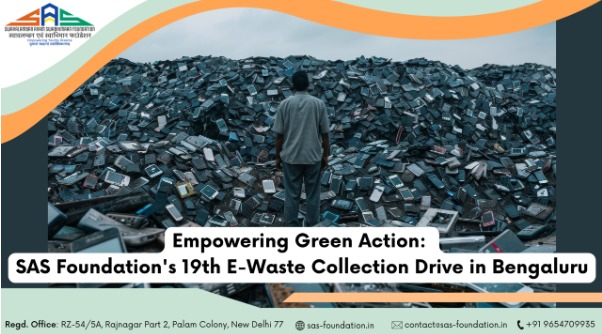🌍 E-Waste: The Silent Crisis We Can No Longer Ignore
In a world where technology is advancing at lightning speed, the gadgets we once admired quickly become obsolete. Every year, millions of tons of smartphones, laptops, televisions, and other electronic devices are discarded globally. This mounting pile of “e-waste” — or electronic waste — poses one of the most urgent environmental and public health challenges of our time.
But here’s the bigger problem: most of us don’t realize the damage improper e-waste disposal causes until it’s too late.
📉 The Alarming Truth Behind E-Waste
According to the Global E-Waste Monitor, the world generated 59.4 million metric tons of e-waste in 2022 alone. Less than 20% of that was formally recycled. The rest? Burned, dumped in landfills, or exported to developing countries with weak environmental regulations — causing severe soil, air, and water pollution.
What many don’t realize is that e-waste contains toxic substances like mercury, lead, cadmium, and brominated flame retardants. When improperly handled, these can seep into the environment, harming both ecosystems and human health.
☣️ How It Affects You and Your Community
Improper e-waste disposal is not a distant issue—it’s affecting your city, your neighborhood, and possibly your own home:
- Air Pollution: Informal recyclers often burn wires and plastic parts to recover valuable metals, releasing toxic fumes that can cause respiratory diseases.
- Water Contamination: Toxic chemicals can leach into groundwater sources, affecting agriculture and drinking water supplies.
- Child Labor and Exploitation: In many unregulated recycling hubs across Asia and Africa, children and vulnerable workers are exposed to hazardous substances without protection.
- Loss of Precious Resources: Electronics hold valuable metals like gold, silver, copper, and rare earth elements. Improper disposal leads to a permanent loss of these non-renewable resources.
🌐 The Global Push for Regulation
The growing threat of e-waste has not gone unnoticed. Over 70 countries have implemented or drafted national e-waste legislation, and international frameworks like the Basel Convention are gaining traction. These regulations are designed to:
- Ensure proper collection and recycling of electronic goods.
- Prevent illegal dumping in low-income countries.
- Hold manufacturers accountable for their products through Extended Producer Responsibility (EPR).
- Promote safe handling and dismantling practices through formal recycling channels.
India, for example, has mandated producers to establish e-waste collection mechanisms and set annual recycling targets. The European Union’s WEEE Directive (Waste Electrical and Electronic Equipment) is one of the most comprehensive global policies pushing producers to take responsibility for their products’ end-of-life.
🧠 Why Awareness Isn’t Enough — Action Is Essential
You might be thinking: “This is important — but what can I really do?”
The answer: a lot.
Whether you’re an individual, a business, or a policymaker, your actions matter. Here’s how you can start being part of the solution:
1. Recycle Responsibly
Use certified e-waste collection centers or drop-off points. Many companies and NGOs (like SAS Foundation) run safe collection drives. Don’t throw old electronics in the dustbin.
2. Buy Less, Use Longer
Resist the urge to upgrade gadgets every year. Choose durable, repairable electronics and donate or sell what you no longer need.
3. Educate Others
Host awareness sessions in your school, office, or community. The more people know, the greater the collective action.
4. Support Circular Economy
Encourage brands that design for longevity, offer take-back schemes, and incorporate recycled materials into new products.
5. Advocate for Policy
Support stronger e-waste regulations at the local and national level. Your voice can influence real change.
🔁 From Trash to Treasure: The Circular Opportunity
While e-waste presents challenges, it also opens doors for innovation. A well-regulated e-waste ecosystem can:
- Create Jobs in recycling, logistics, and repair industries.
- Foster Innovation by pushing companies to design sustainable products.
- Recover Valuable Resources like gold and rare earth metals without destructive mining.
- Strengthen ESG Goals for companies looking to meet sustainability commitments.
E-waste isn’t just an environmental issue — it’s an opportunity to reshape how we value our resources, technology, and responsibility.
📬 Ready to Make a Difference?
If this message resonates with you, it’s time to act. Learn more about e-waste challenges, solutions, and how you can get involved by subscribing to our newsletter. Get insights, stories, policy updates, and expert interviews delivered straight to your inbox.
👉 Subscribe on LinkedIn for actionable updates and become part of the solution.










